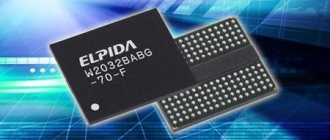Nadezhda Zakharova 09/27/2018
Despite the ever-increasing complexity of hardware mining of cryptocurrencies and the general decline in asset prices across the industry, users continue to collect and activate new farms.
The cost of components that ensure mining profitability is constantly growing with the advent of new models not only in the range of video cards, but also in ASIC miners.
Using the latest series of motherboards as a basis for mining rigs (farms) is often associated with a problem when the equipment does not start without a connected monitor.
Purchasing even the cheapest model for a mining farm, provided that the monitor itself does not participate in the process in any way after launch, is an unjustified waste that increases the payback period of investments.
However, preference for motherboards that allow you to run a farm without a monitor is not always beneficial from a technical point of view, since they do not support the latest generation of video cards.
The solution was a mining monitor emulator.
How to use a laptop screen as a monitor
The need to use a laptop as a monitor is not so rare for owners of computers and gadgets.
Today, many people have a laptop in addition to a desktop computer, and the thought of connecting its screen to a PC appears not only when the main monitor breaks down or when it is necessary to install a second one, but also out of curiosity. So can this be done and if so, how?
The presence of the same VGA and HDMI connectors on the laptop and monitor evokes thoughts of their interchangeability without any extra effort. These thoughts are fueled by numerous tips from the Internet claiming that a laptop can be connected instead of a monitor using a regular VGA (¬¬DS¬UB) or HDMI cable. Alas, this is not always the case.
The VGA and HDMI connectors of the vast majority of laptops work only as an output: you can connect an external monitor or TV to them, but vice versa - you cannot transfer an image from a video card to the laptop through them. There are exceptions, but they are quite rare. For example, some Eurocom laptops have a separate HDMI input, while the Lenovo Y710/730 laptops had a bidirectional VGA port with a convenient in/out switch.
However, it is still possible to turn the LCD screen of any laptop into a full-fledged monitor using a cable - however, to do this you will have to remove it from the case and connect it to an LCD controller purchased separately.
If both computers are connected to a local network, you can use the laptop as a monitor without any special tricks.
However, to use this method, you must not only meet certain conditions, but also have system administration skills.
In addition, this method places quite high demands on the local network and the “stuffing” of the laptop. Especially if the PC screen resolution is high, and you need a clear picture without freezing.
Both the laptop and the computer will require system preparation.
Windows computers (version 7 and later), you can use the RDP (Remote Desktop Protocol) service to share your desktop with other users. By default this access is disabled. To enable it, you must allow remote connections in the “Remote Access” tab of the system properties window on your PC.
You can see the computer desktop on your laptop using the standard “Remote Desktop Connection” program by entering the password of the PC administrator or any other user who is allowed remote access.
Remote access to the desktop of another computer is not always possible on the first try. The operation of RDP is influenced by many factors: versions of installed service packs, firewall settings, local network settings, and more.
On Windows 10, there is an easier and more accessible way - using the “Project to this PC” option in the “Options” tab of the Display Properties window.
However, it will only work if the laptop is equipped with a Wi-Fi adapter that supports Miracast (a standard for wireless multimedia signal transmission).
But not only other computers with Wi-Fi modules running Windows 10 will be able to use this laptop as a monitor, but also any other devices that support Miracast technology - the laptop screen will appear in their list of available wireless screens.
For MacOS there are similar mechanisms:
- Back to My Mac, powered by iCloud, is available from macOS Lion 10.7.5 to macOS High Sierra;
- – With macOS High Sierra, remote screen sharing is done through the System Preferences Sharing window.
Sharing is done using VNC technology, so you can share your screen not only with macOS users on your network, but also with anyone else using a VNC client who knows the password you set. VNC clients exist for both Linux and Windows.
For a computer running Linux, there is generally no particular difference between “its” monitor and the monitor of any other computer on the network running an SSH client.
The SSH protocol (from English Secure SHell - secure shell), which allows remote control of a computer, is supported by any Linux distribution.
Of course, in order to see the screen of a Linux system on a laptop screen, it must also be configured accordingly.
Third-party programs also use the transfer of information over the local network.
Therefore, if you connect a laptop to a PC via weak Wi-Fi, you will not be able to watch HD video on the laptop screen from this PC - the picture will be ungodly “slow.”
However, there are some advantages to using third-party programs: the relative ease of setup and versatility of use on different versions of different operating systems.
For example, the most common program, Teamviewer, has distributions for all current versions of Windows, Mac OS, linux, Android and iOS.
With its help, the PC screen running one of these systems can be accessed from almost any mobile device or computer.
When installing Teamviwer on a PC, you are automatically given an ID and password, which by entering them in the program window on another computer, you will have full access to the screen.
Teamviwer is free for non-commercial use. There are many other programs with similar capabilities: Chrome Remote Desktop, AnyDesk, Splashtop, various VNC clients (TightVNC, UltraVNC) and others.
As you can see, although simply plugging in a laptop instead of a monitor most likely won’t work, there are ways to transfer video information from a computer’s video card to a laptop screen—and they are quite varied. All that remains is to choose the right one.
Source: https://club.dns-shop.ru/blog/t-114-monitoryi/21693-kak-ispolzovat-ekran-noutbuka-v-kachestve-monitora/
HDMI plug or “crutch” for Pipa
A little over a year ago I purchased a new product from PIPO, a mini computer PIPO X10. Almost everyone liked it, large screen, built-in battery, external antenna. But almost immediately the problem became clear: he did not want to work normally, and the problem was not only with me, but on a global level. I played with it and eventually threw it on the shelf. And so one of my readers suggested an option for reviving this computer, in fact, today I’ll tell you how to revive PIPO. Before moving on to the product review, I’ll tell you the background of this whole action. As I already said, last fall I bought myself such a toy, I even wrote a review of it, where I pointed out the problem. Moreover, as far as I know, this review is the only one about this version.
I bought it for the ability to autonomously control such things as a 3D printer, laser and mechanical engraver, as well as connect a regular printer, i.e. The goal is to almost completely eliminate the main computer when working with these devices. The devices themselves were going to be powered using a 24-volt uninterruptible power supply, and the computer has a built-in battery with a capacity of 10,000 mAh. In addition to the large screen, there are also four USB connectors, one of which is 3.0. Those. It was just right for my task.
I thought about managing everything either from the computer itself, or via WiFi or a wired network, especially since WiFi on this computer works quite well. In general, I have a review of the previous version, which I really liked, but I wanted a “new thing”.
For some time the computer worked quite normally, maybe half a day, maybe a day, I don’t remember. But then an error started appearing. At the same time, 2.0 ports were disabled. And what’s interesting is that if only a flash drive was connected, then everything was fine, but as soon as I connected something else, that was it. USB 3.0 worked fine, but if you connected a hub to it, the picture was the same.
When trying to reconnect the device, as Windows recommends, the disconnect occurred within a few seconds.
At the same time, the task manager wrote that the descriptor request failed.
A topic about this computer was created on the 4pda forum and there I learned that many users have the problem, although not all. The problem affected both users of computers with one OS and Win+Android.
The first thing that happened was the USB HUB installed on the computer board. But the X9 has the same hub and there are no problems there, there are no such problems in other computers either, fortunately I tested quite a lot of them.
In the process, we found out that the problem only affects Windows, everything works fine on Android, which means we need to “dig” towards the operating system. We tried installing different builds of Win10 and even Win8 (with which the touchscreen does not work), sometimes it worked for a while, we started to be happy, but then it failed again. But through all these ordeals, it was precisely determined that if you do not install drivers on the video card, then everything works fine. By the way, after installing the operating system, it did not install any drivers itself, only the basic ones and the task manager looked very sad, but one of the users provided a complete archive of drivers.
And relatively recently, one of my readers not only suggested a solution to the problem, but also clearly showed that it works. For which a huge thank you to him. Moreover, in essence, the solution was on the surface, and perhaps this is why the computer worked for some users. And everything worked fine only if a monitor or TV was connected to the HDMI output. And the problem arose precisely after installing the video drivers, but somehow no one guessed it then.
As you understand, it is simply unprofitable to keep a dedicated monitor, and the person suggested using a plug for HDMI or a “monitor emulator”.
In general, I ordered it for myself, since the price of 5 bucks is not so high for an experiment. It looks like a flash drive, only with an HDMI plug.
The case is metal, looks very neat.
It takes up little space at the back and does not interfere with USB connectors, which is very good. We connect and proceed to testing.
When connected, a second monitor appears.
This monitor is recognized as a digital TV 28E850.
If you select the operating mode as an extended desktop, it gives you a choice of resolutions from 800x600 to 4k with a bunch of intermediate options.
But since I didn’t need this option, I chose the duplication mode (it’s the default), and accordingly the resolution was set to 1920x1280 (PIPO screen resolution).
As usual, the mouse “fell off” in the process, so everything else is either done with the touchpad, or you can switch it to USB 3.0. Go to the task manager and simply turn off/on - Universal USB hub. After that everything works. You can generally just restart the computer, but it will take longer 
I became curious about what was inside this plug and I tried to open it, but alas, it felt like the insides were filled with rubber, I had to go online and look for information, and I found it on miner forums. The thing is that they often manage their farms through Radmin/teamviewer, and without a connected monitor the program sets the resolution to 640x480 or 800x600. Although I usually didn’t have any problems with radmin, I just logged in remotely and set what was required, but team viewer is more complicated. In addition, there are problems starting AMD video cards.
It turned out that the design is extremely simple, and consists of an EEPROM chip and several components.
There is even a diagram for connecting EEPROM, albeit in a “stripped-down” form. They wrote on the forum that there may be problems with such a connection, most likely it is necessary to install pull-up resistors along the signal circuits. Although it’s a mystery to me how the absence of pull-up resistors can affect the serviceability of the HDMI port, but it’s better to install them. There is also a capacitor on the board, presumably for the power supply circuit. The EEPROM contains information about the “monitor” and a list of supported resolutions.
Moreover, it turned out that similar plugs are also produced by a person from Russia.
Along the way, it turned out that there are a couple more solutions, one is to use a VGA dongle (where such an option is available) or an HDMI-VGA converter. But the latter solution has both advantages and disadvantages. The advantage is that you can connect a VGA monitor, but the disadvantages are complaints that sometimes this leads to failure of the video card. I myself have used a similar converter for a long time and everything works fine, but knowing how it heats up and how much it consumes, I can assume that the fears are not groundless. In addition, I don’t think that the interface developers thought that such a powerful load would be connected to the port.
But sometimes there is another problem: the converter also needs its own “plug” so that it thinks that a monitor is connected to it, fortunately its design is primitive and consists of three resistors.
As a result, the computer works, although there were some nuances, after a while the mouse turned off again and this happened after the next transition to sleep mode, so I had to turn it off, and at the same time I prohibited turning off the power to the USB controllers.
I wanted to end the review here, but I couldn’t resist and decided to look into it further, in case it would be useful. And so, first I tried to read the EEPROM chip, but nothing worked for me, although I tried in different ways. To connect to the programmer I used the diagram given above. In the end, I gave up on this matter and decided to give up, but I really wanted to figure it out and started trying to open this “flash drive” and finally opened it. It turned out that if you press hard on the rubber part from the side opposite the connector, it opens. But inside everything is filled with something rubbery.
I have already written several times that I try not to use destructive methods when checking devices. Therefore, I carefully gnawed out a piece of rubber, although it would have been much faster to remove it all. True, initially I started cutting from the wrong side of the board, focusing on the photo that I showed above.
Having gained “access to the body,” everything became much simpler. I was interested in the connection pins labeled SCL, SDA and GND. On the connector layout diagram, I highlighted those contacts that are generally needed for the emulator to work.
But I realized my mistake when I saw the full diagram. The fact is that in the connection diagram that I found on the miners forum, there were several errors at once. 1. SCL and SDA contacts are mixed up. They were not indicated in the diagram, and I was too lazy to open the datasheet for the EEPROM chip. Naturally the chip could not be read.
Attention, the contact numbering is indicated on the socket side!
But if the previous mistake was partly mine, then I definitely could not predict the next one. The GND (ground) pin is not connected to the connector pins themselves, but is routed to the housing! Those. Even if I had connected the data lines correctly, I would never have read the chip; this could only be found out by opening the emulator. In general, I connected the ground, swapped the SCL and SDA contacts and things started, hurray, first small victory.
The chip was read, and in the information received I saw the name of the emulated monitor.
But knowing that there are failures, I checked, i.e. repeated reading with comparison of results, the test went well, we can assume that the dump is correct.
I was about to stop there, but then I thought, what if I check it out. At the same time, I sketched out a diagram of the emulator under review, in case it comes in handy. The capacitor can have a value from 10 to 100 nF, resistors from about 2.2 to 6.2 kOhm. Unused pins just hang in the air, although this is incorrect, this is exactly how it is done in the emulator.
I didn’t have 24C02, but I found several 26LC16B.
We write the firmware into the chip that I downloaded before, while in the programmer the chip was selected as 24C02, although this is not important. We assemble such a structure “from sticks and ropes.”
We turn it on, it works like a native one. The only nuance, and an important one. The common terminal of the circuit had to be connected to the connector body; it absolutely did not work through a specially designed contact. In addition, if you repeat, remember to read the numbering of the contacts correctly, the numbering above is indicated on the side of the socket, in the diagram it is done similarly.
The only nuance, and an important one. The common terminal of the circuit had to be connected to the connector body; it absolutely did not work through a specially designed contact. In addition, if you repeat, remember to read the numbering of the contacts correctly, the numbering above is indicated on the side of the socket, in the diagram it is done similarly.
And now about saving. The chip costs about 10 cents, there are cheaper ones, but they have a smaller case size. Alternatively, rip it out of some old board. It’s easier to use a piece of HDMI cable as a connector, maybe the cheapest one, it costs about 1 dollar and you can make 2 emulators from it. Three resistors and a capacitor, well, let's say another 5 cents. The panel may not be used. Total 10+50+5=65 cents per emulator.
Of course, you will say, this programmer costs money. Of course it’s worth it, but there are three options here: either find familiar radio amateurs and go visit them, or assemble the programmer yourself, or buy the simplest CH341A, fortunately it costs about $2.58 including delivery. Even if you buy a programmer, it still works out cheaper than buying a ready-made emulator 
As an addition, the wiring of the DVI-VGA adapter is for those who do not have a VGA output, but have DVI with additional contacts for analog output (above and below the wide contact) - DVI-A, DVI-I.
In this option, you can try to get by with three 75 Ohm resistors. It’s not a fact that it will work, but you don’t need to do anything special.
I anticipate questions and will try to answer. Initially, to solve the problem, attempts were made: 1. Disabling power saving 2. The same at the registry level. 3. Reinstalling Windows with changing versions and builds 4. Using external hubs with power. 5. Search for alternative drivers 6. Changing BIOS settings 7. Letters to the manufacturer and sellers.
All attempts simply ended in nothing, the result was always the same - a failure of USB ports. It worked only under one condition - without video card drivers. Those. either one or the other.
I tested the computer for several days, the ports were disabled once, during the next transition to sleep mode, I disabled them, after that everything was fine. The solution, of course, is an obvious “crutch”, but if it works, then it’s better than nothing at all. But I would advise you to first try with an external monitor or an HDMI-VGA converter (if you have somewhere to get it), and if everything is fine, then buy such a plug. I chose the seller simply at the minimum price, I don’t think there are any differences.
I almost forgot the most important thing, the actual EEPROM firmware, I threw it into the archive along with the connection diagram.
Perhaps someone will ask why I did all this. Yes, it somehow happened that when I was looking for at least some information, I saw that it simply wasn’t there. That’s actually why I decided to fill this gap. Of course, it is often much easier to buy such a plug, but if you are comfortable with a soldering iron, then why buy if you can assemble it, and for pennies. You can use a broken cable, which is no longer suitable for its intended purpose, remove resistors and a capacitor from almost any board, EEPROM can also be found, but less often. I didn’t make a sign, sorry, I thought it was unnecessary, only five details 
That's all, I hope it was useful.
Monitor emulators
Cryptocurrency mining remains a popular activity for blockchain enthusiasts, with or without technical means if they prefer cloud mining. Technical means are divided into 2 groups - ASICs and video card farms. Users who use video cards will need a monitor emulator for mining.
Why do you need a monitor emulator?
In some cases, when performing calculations on computer graphics processors - GPGPU (General-purpose computing for graphics processing units), including cryptocurrency mining, you do not need to connect a display.
Thanks to this, the costs of the hardware of the project are reduced and energy consumption is reduced.
But in the absence of a display, the personal computer (PC) operating system disables the graphics unit (GPU), so calculations using the graphics cores will not be possible.
VGA plugs
To enable the GPU without a monitor, compact hardware devices, often called dummy plugs, are attached to the PC's display port instead. The program polls the port, the device responds, after which the PC considers the display connected and puts the GPU into operating mode.
Some PCs do not block the GPU due to the lack of a display, but with remote control, the default image resolution will only be 640x480 pixels. In some cases, mining stops and the graphics freeze when a remote PC logs in through the TeamViewer program. Connecting the simulator to the graphics output of the PC will help increase the resolution and eliminate GPU freezing.
The stubs contain memory for storing EDID data (Extended Display Identification Data), containing information about the simulated display - resolution, screen refresh rate, etc.
Some models come with rewritable memory, allowing the user to load their equipment's specific EDID data.
If the overwrite option is not available, you can order a device with the desired EDID content from the seller or manufacturer.
Emulator characteristics:
Types of emulators
Devices are available for graphics output connectors such as VGA, DVI, HDMI, DisplayPort (DP), Mini DP and Thunderbolt. Devices for VGA and DVI connectors support resolutions up to 1920x1080 pixels inclusive with a screen refresh rate of 60 Hz. The market offers a DVI dongle option with a resolution of 2560x1600 at a frequency of 60 Hz. HDMI-VGA adapters are also used to simulate a screen.
HDMI dongle
A dongle connected to the HDMI port simulates a display with the required resolution, for example, 4K (3840x2160 pixels). Since 2015, such devices have been produced using the “Headless ghost” technology. The PC identifies them as headless devices so that the user does not confuse them with real monitors.
The technology and prototypes were developed by a designer and engineer from London in 2014, using voluntary investments raised on Kickstarter.
The “ghost” refers to the simulation device, and the “head” refers to the display. The simulator works with a “headless” PC, which, in addition to the screen, may not have a mouse and keyboard. In such a PC, a network card is installed to connect the desktop to a remote control PC via the Internet.
If the PC is controlled autonomously, then the emulator is removed while the screen is connected, which is why the video card farm stops mining cryptocurrency. In such cases, in order to continue mining without interruptions, it is advisable to use an HDMI-VGA adapter instead of a plug.
HDMI-VGA adapter
Since VGA refers to analog interfaces, and HDMI refers to digital ones, it is advisable to use the term “adapter” or “digital-to-analog converter” instead of “adapter”. Thus, the converter chip in the adapter imitates the screen. In this case, the analog connector “hangs in the air” and is ready to connect a control monitor at any time.
WHERE TO BUY A PC SCREEN EMULATOR?
Emulators and adapters are manufactured by foreign and Russian enterprises. You can buy their products in online stores, as well as retail radio stores and electronics markets in big cities. A foreign online resource available to Russian buyers is the Chinese store AliExpress.
Equipment with VGA and DVI connectors is considered obsolete; digital standards HDMI, DP, Mini DP and Thunderbolt have been developed to replace it, so some manufacturers do not produce products for connecting to obsolete connectors. The Chinese manufacturing company Fueran offers a wide range of plugs, adapters and adapters, including those suitable for outdated equipment.
Domestic sellers are represented on Yandex.Market. The Russian manufacturer “Open Developments” sells goods through its own online store, retail and resellers, a list of which is provided on the website.
Purchasing on European and American resources, as well as retail at local outlets, will cost more.
SUBSCRIBE – STAY UP TO DATE WITH ALL THE NEWS FROM THE WORLD OF CRYPTOCURRENCIES, AND DON’T FORGET TO LIKE!) WE WILL BE GLAD IF YOU VISIT OUR SITE: https://cryptolizacia.ru
Source: https://zen.yandex.ru/media/id/5bb9cfe5ec796600ac91a0ba/emuliatory-monitora-5c1df8b89b524c00ab6eb17a
HDMI dongle
Since the release of such proposals on the market, not a single complaint from miners about their failure has been recorded.
The design there is elementary, and everything is done quite well, so there are no problems.
One of the latest market offerings is monitor emulators for miners, created using Headless Ghost technology.
They are installed in the HDMI port of the video card, which begins to see a monitor that supports expansion up to 4K.
It is these models from the flagship, the Chinese company Fueran, that allow you to configure the maximum expansion for remote access, and also make the operation of the mining farm stable. At the same time, the only drawback in the operation of such an adapter is the inability to connect a monitor without dismantling the equipment.
HDMI dongle or
A little over a year ago I purchased a new product from PIPO, a mini computer PIPO X10. Almost everyone liked it, large screen, built-in battery, external antenna. But almost immediately the problem became clear: he did not want to work normally, and the problem was not only with me, but on a global level. I played with it and eventually threw it on the shelf.
And so one of my readers suggested an option for reviving this computer, in fact, today I’ll tell you how to revive PIPO. Before moving on to the product review, I’ll tell you the background of this whole action. As I already said, last fall I bought myself such a toy, I even wrote a review of it, where I pointed out the problem.
Moreover, as far as I know, this review is the only one about this version. I bought it for the ability to autonomously control such things as a 3D printer, laser and mechanical engraver, as well as connect a regular printer, i.e. The goal is to almost completely eliminate the main computer when working with these devices.
The devices themselves were going to be powered using a 24-volt uninterruptible power supply, and the computer has a built-in battery with a capacity of 10,000 mAh. In addition to the large screen, there are also four USB connectors, one of which is 3.0. Those. It was just right for my task.
I thought about managing everything either from the computer itself, or via WiFi or a wired network, especially since WiFi on this computer works quite well. In general, I have a review of the previous version, which I really liked, but I wanted a “new thing”. For some time the computer worked quite normally, maybe half a day, maybe a day, I don’t remember. But then an error started appearing.
At the same time, 2.0 ports were disabled. And what’s interesting is that if only a flash drive was connected, then everything was fine, but as soon as I connected something else, that was it. USB 3.0 worked fine, but if you connected a hub to it, the picture was the same. When trying to reconnect the device, as Windows recommends, the disconnect occurred within a few seconds.
At the same time, the task manager wrote that the descriptor request failed. A topic about this computer was created on the 4pda forum and there I learned that many users have the problem, although not all. The problem affected both users of computers with one OS and Win+Android. The first thing that happened was the USB HUB installed on the computer board.
But the X9 has the same hub and there are no problems there, there are no such problems in other computers either, fortunately I tested quite a lot of them. In the process, we found out that the problem only affects Windows, everything works fine on Android, which means we need to “dig” towards the operating system.
We tried installing different builds of Win10 and even Win8 (with which the touchscreen does not work), sometimes it worked for a while, we started to be happy, but then it failed again. But through all these ordeals, it was precisely determined that if you do not install drivers on the video card, then everything works fine.
By the way, after installing the operating system, it did not install any drivers itself, only the basic ones and the task manager looked very sad, but one of the users provided a complete archive of drivers. And relatively recently, one of my readers not only suggested a solution to the problem, but also clearly showed that it works. For which a huge thank you to him.
Moreover, in essence, the solution was on the surface, and perhaps this is why the computer worked for some users. And everything worked fine only if a monitor or TV was connected to the HDMI output. And the problem arose precisely after installing the video drivers, but somehow no one guessed it then.
As you understand, it is simply unprofitable to keep a dedicated monitor, and the person suggested using a plug for HDMI or a “monitor emulator”. In general, I ordered it for myself, since the price of 5 bucks is not so high for an experiment. It looks like a flash drive, only with an HDMI plug. The case is metal, looks very neat.
It takes up little space at the back and does not interfere with USB connectors, which is very good. We connect and proceed to testing. When connected, a second monitor appears. This monitor is recognized as a digital TV 28E850. If you select the operating mode as an extended desktop, it gives you a choice of resolutions from 800x600 to 4k with a bunch of intermediate options.
But since I didn’t need this option, I chose the duplication mode (it’s the default), and accordingly the resolution was set to 1920x1280 (PIPO screen resolution). As usual, the mouse “fell off” in the process, so everything else is either done with the touchpad, or you can switch it to USB 3.0. Go to the task manager and simply turn off/on - Universal USB hub. After that everything works. You can generally just restart the computer, but it will take longer











